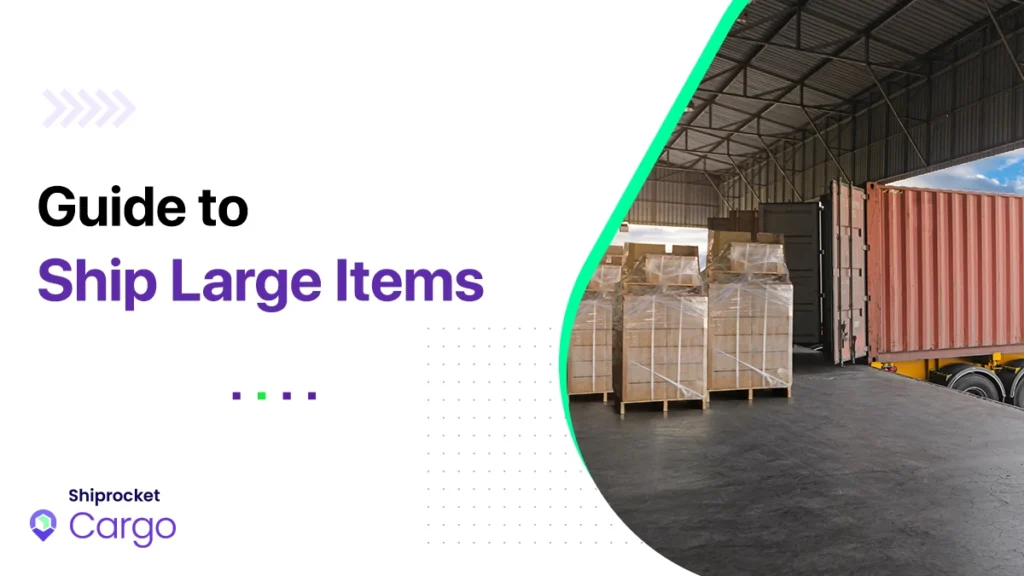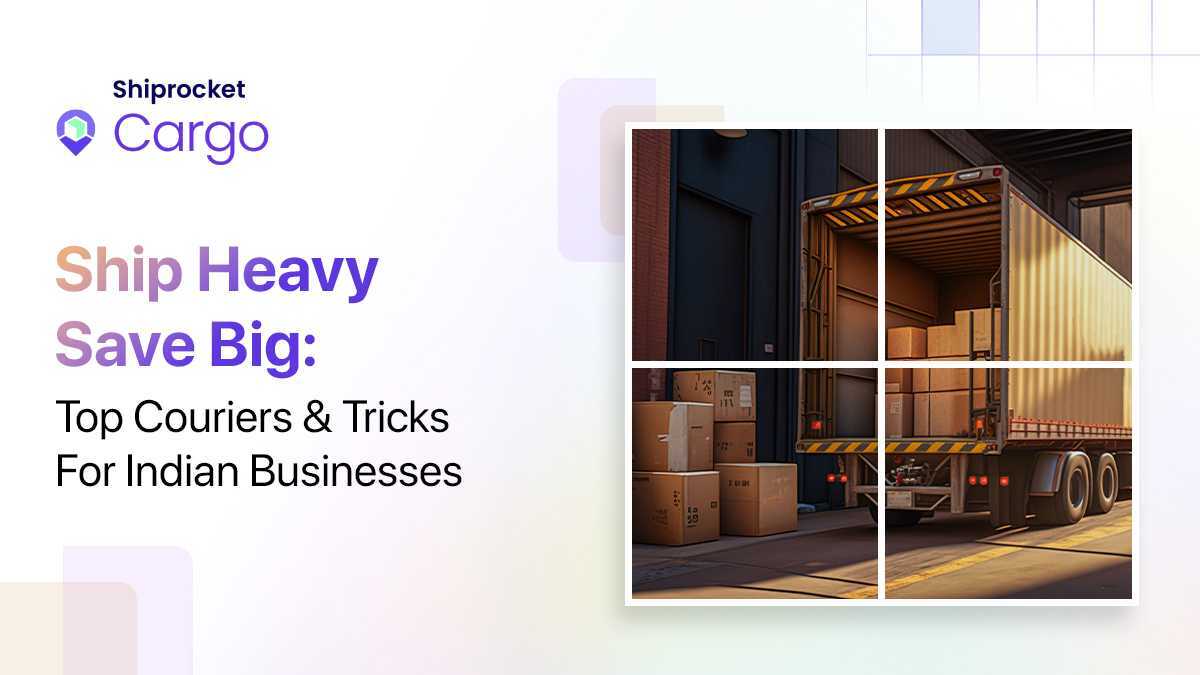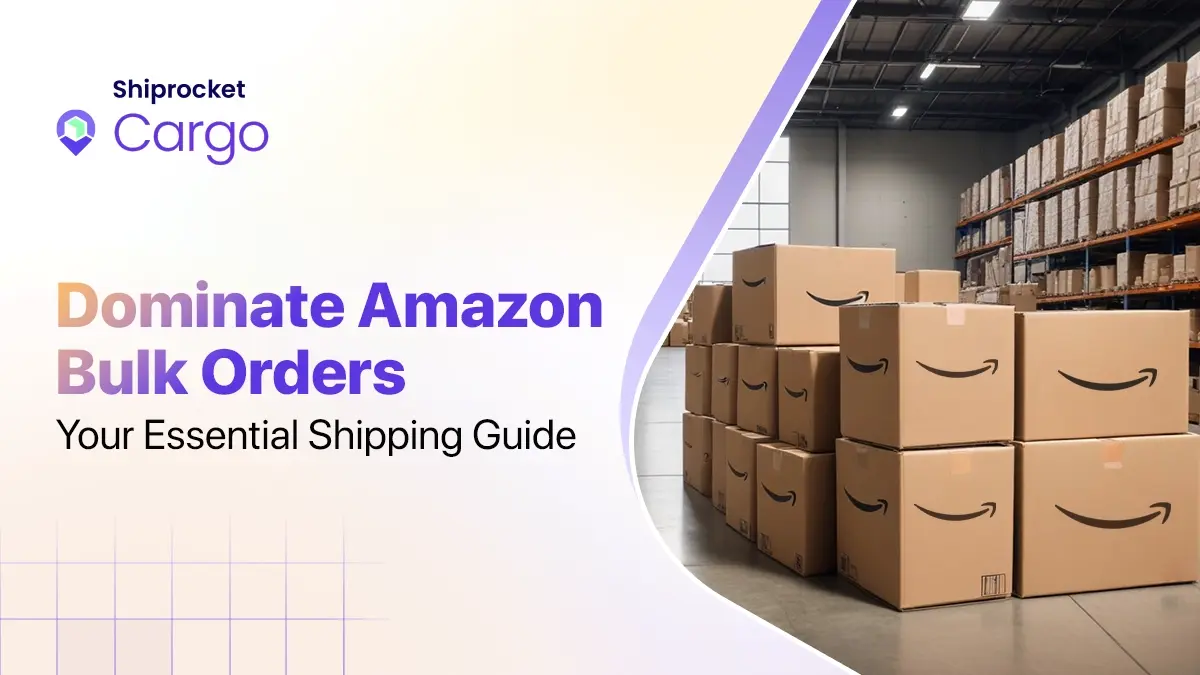Shipping Large Items: Everything You Need to Know

The Indian economy is constantly growing owing to the rising number of startups and support from the government to business organizations. One of the industries responsible for the uprising of the Indian economy is the B2B logistics industry. It is because of B2B logistics service providers that businesses can cater to the demands of the customers more quickly and efficiently.
However, when it comes to shipping large items, it can be quite challenging. From furniture and appliances to machinery and equipment, shipping these items requires extra effort, care, and planning. Unlike small packages, large items are not easily transported, and you need to take many factors into consideration to ensure that your shipment arrives safely and on time.
The Challenges of Shipping Large Items
Shipping large items can be difficult because of their size, weight, and fragility. Large items are often too big to fit into standard shipping boxes or containers, which means the business needs to use specialized packaging materials and methods. In addition, they require extra handling and care to prevent damage during transit. Moreover, large items are usually more expensive to ship than small ones, so businesses must be prepared for higher shipping costs.
Best Practices for Shipping Large Items
Let’s have a look at some of the best practices for shipping large items efficiently:
Select a Reliable Shipping Carrier
When it comes to shipping large items, choosing the right shipping carrier is critical. Businesses want to make sure that their package arrives safely and on time without costing them an arm and a leg.
One option is to use a shipping carrier that specializes in oversized and heavy items. These carriers have the experience and equipment required to handle large packages and often offer insurance options to protect the shipment.
Another option is to use a traditional carrier, such as UPS or FedEx. These carriers can handle large packages but may charge additional fees for oversized items. Additionally, they may not have the necessary equipment to handle heavy items.
Opt for the Best Shipping Method
Once the shipping carrier has been selected, the B2B businesses must choose the right shipping method. A business can choose from the following:
LTL Freight Shipping
Less-than-truckload (LTL) freight shipping is a cost-effective option for shipping large items that do not require a full truckload. LTL shipping carriers transport multiple shipments from different customers on the same truck, reducing shipping costs for each customer.
White Glove Shipping
White glove shipping is a premium service that involves special handling of large and fragile items. The shipping carrier provides door-to-door delivery, unpacking, and assembly services, ensuring the item is delivered safely and securely.
Parcel Shipping
Parcel shipping is a common shipping method for smaller large items that do not require special handling. Parcel carriers such as UPS, FedEx, and USPS can handle packages up to 150 lbs and 165 inches in length and girth combined.
Preparing the Item for Shipping
Proper packaging is crucial when shipping large items to ensure they reach their destination safely and securely. The packaging should be able to protect the item from damage, moisture, and other external factors that could cause harm during transportation. When packaging large items, here are some essential tips to keep in mind:
Use Durable and Sturdy Packaging Materials
The packaging materials used should be able to withstand the rigors of transportation. It’s essential to use sturdy and durable packaging materials that can protect the item from bumps, drops, and other hazards during transit. Consider using materials such as corrugated cardboard, wooden crates, or custom-made containers.
Use Protective Cushioning Materials
Protective cushioning materials such as bubble wrap, foam, and packing peanuts help prevent the item from moving inside the package. This helps to minimize the risk of damage during transportation.
Label the Package Clearly
Labeling the package clearly is essential when shipping large items. The label should include the recipient’s name and address, your name and address, and any special handling instructions. You can also include additional information, such as the item’s weight, dimensions, and fragile status.
Conclusion
Shipping large items can be challenging, but with proper planning and preparation, you can ensure your shipment arrives safely and on time. Remember to use sturdy and durable packaging materials, label and document your shipment correctly, and choose the right carrier for your needs. By following these tips, you can ship large items with confidence and ease.
Frequently Asked Questions
Q1.What is the maximum weight and size limit for shipping large items?
Ans. The weight and size limit for shipping large items vary depending on the carrier and shipping method. You should contact the carrier to inquire about their specific limitations.



